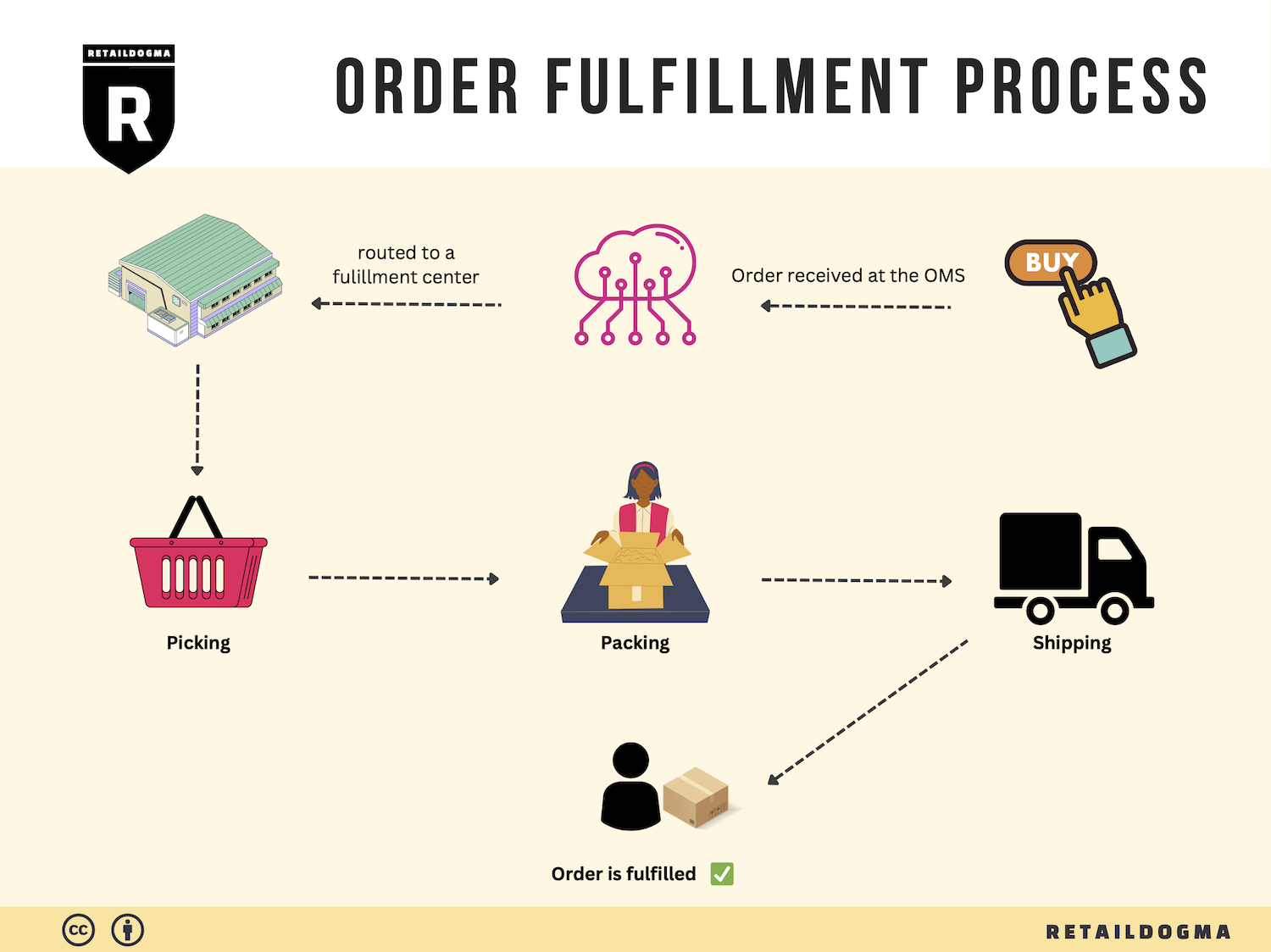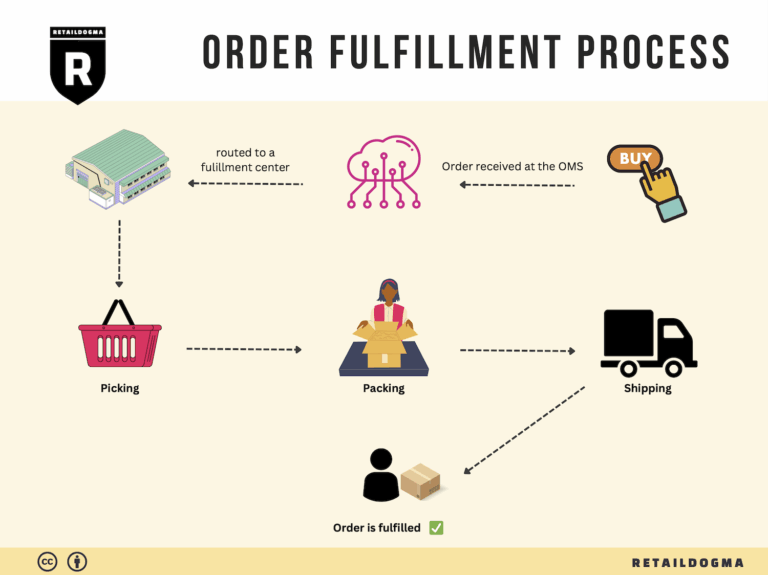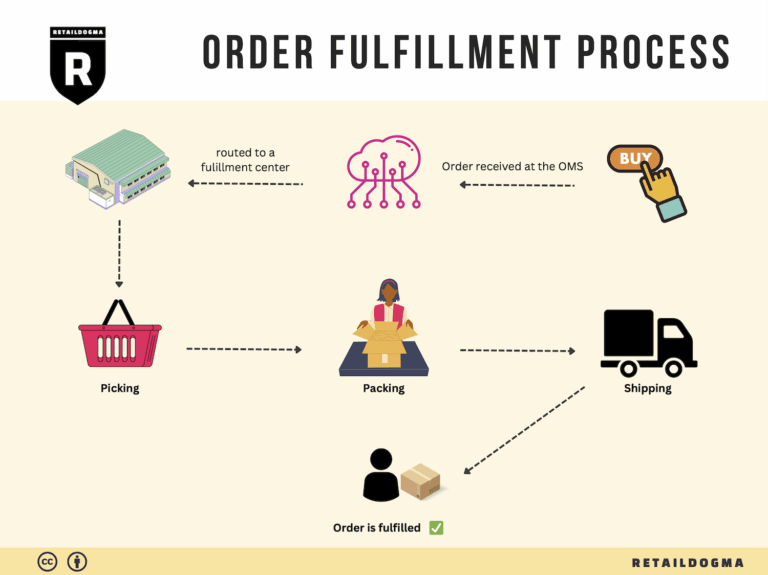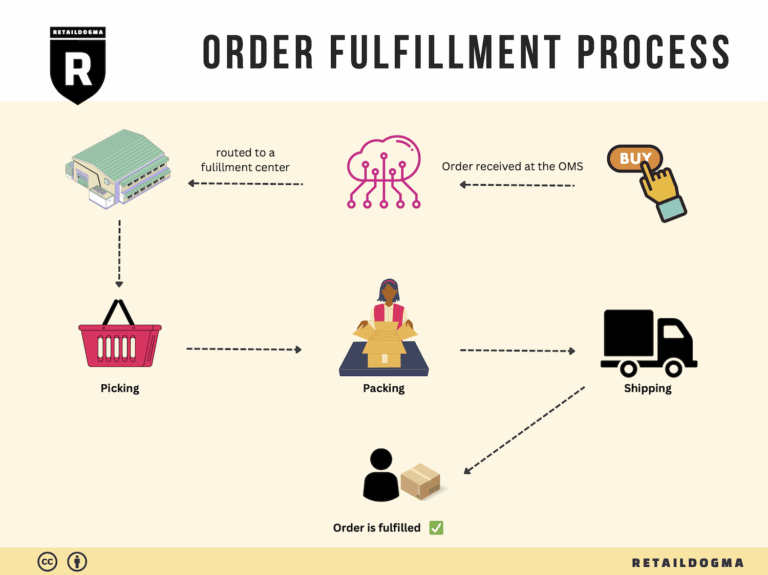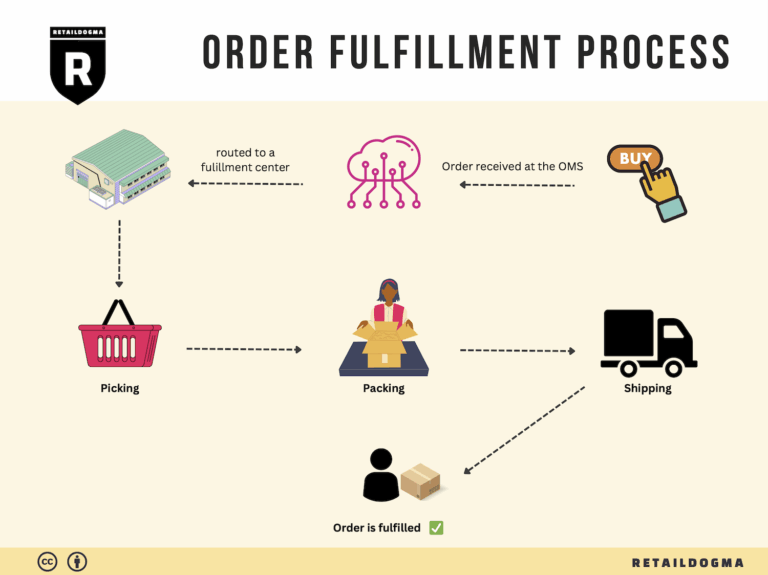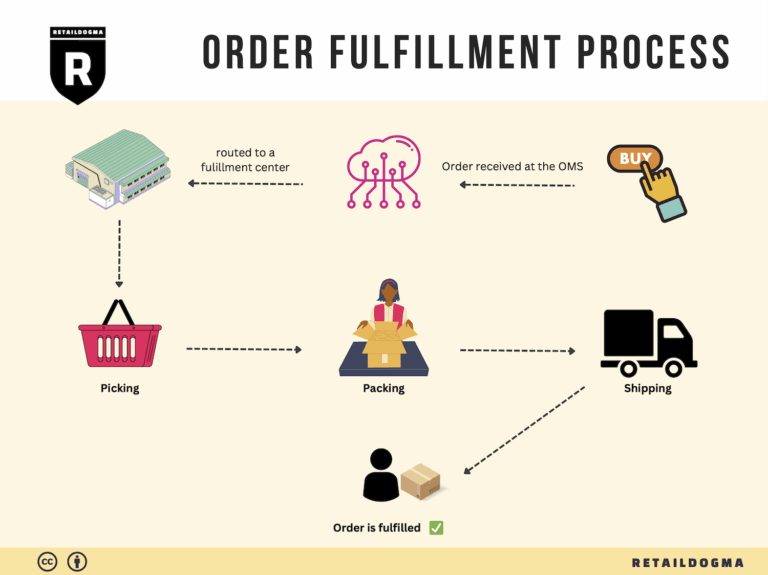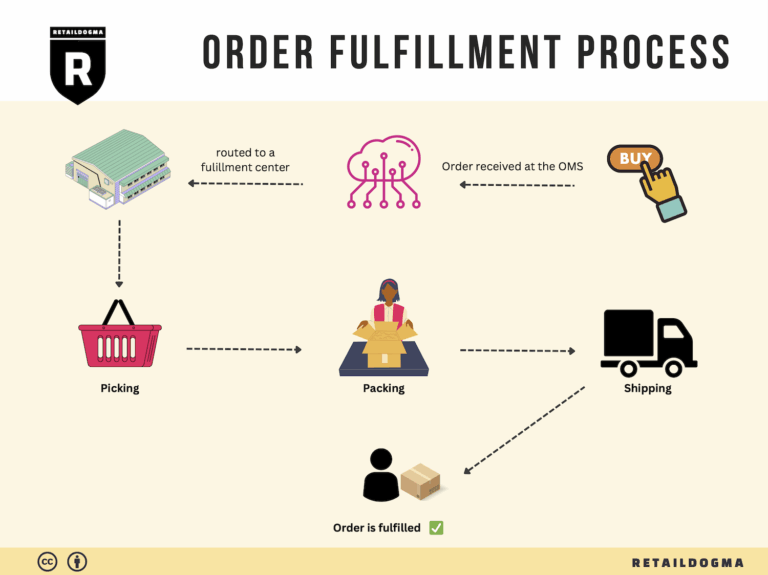What Is A Fulfillment Center? A Complete Guide (2025)
What is E-commerce Fulfillment? An Introduction for Growing Businesses
Understanding the Challenges of E-commerce Fulfillment
As an e-commerce business owner, you may find yourself drowning in the complexities of packing and shipping orders. The excitement of growing your online store can quickly turn into stress when you realize that managing logistics is a significant undertaking. From accurately picking items to ensuring timely delivery, fulfillment can be overwhelming, especially as your sales increase. This is where understanding e-commerce fulfillment becomes essential.
Defining E-commerce Fulfillment
At its core, e-commerce fulfillment is the process of getting products from your warehouse or supplier to your customer’s doorstep. This includes inventory management, order processing, picking, packing, shipping, and even handling returns. Efficient fulfillment is crucial for maintaining customer satisfaction and ensuring repeat business. In today’s competitive landscape, fast and reliable delivery is not just a nice-to-have; it’s a necessity.
What This Guide Will Cover
In this guide, we will explore various fulfillment models that can help streamline your logistics operations. You’ll learn about:
-
Third-Party Logistics (3PL): Understand how outsourcing your fulfillment to a 3PL provider can free up your time and resources, allowing you to focus on growing your business.
-
Fulfilled by Amazon (FBA): Discover how leveraging Amazon’s extensive logistics network can enhance your reach and simplify your shipping processes, even if you’re not exclusively an Amazon seller.
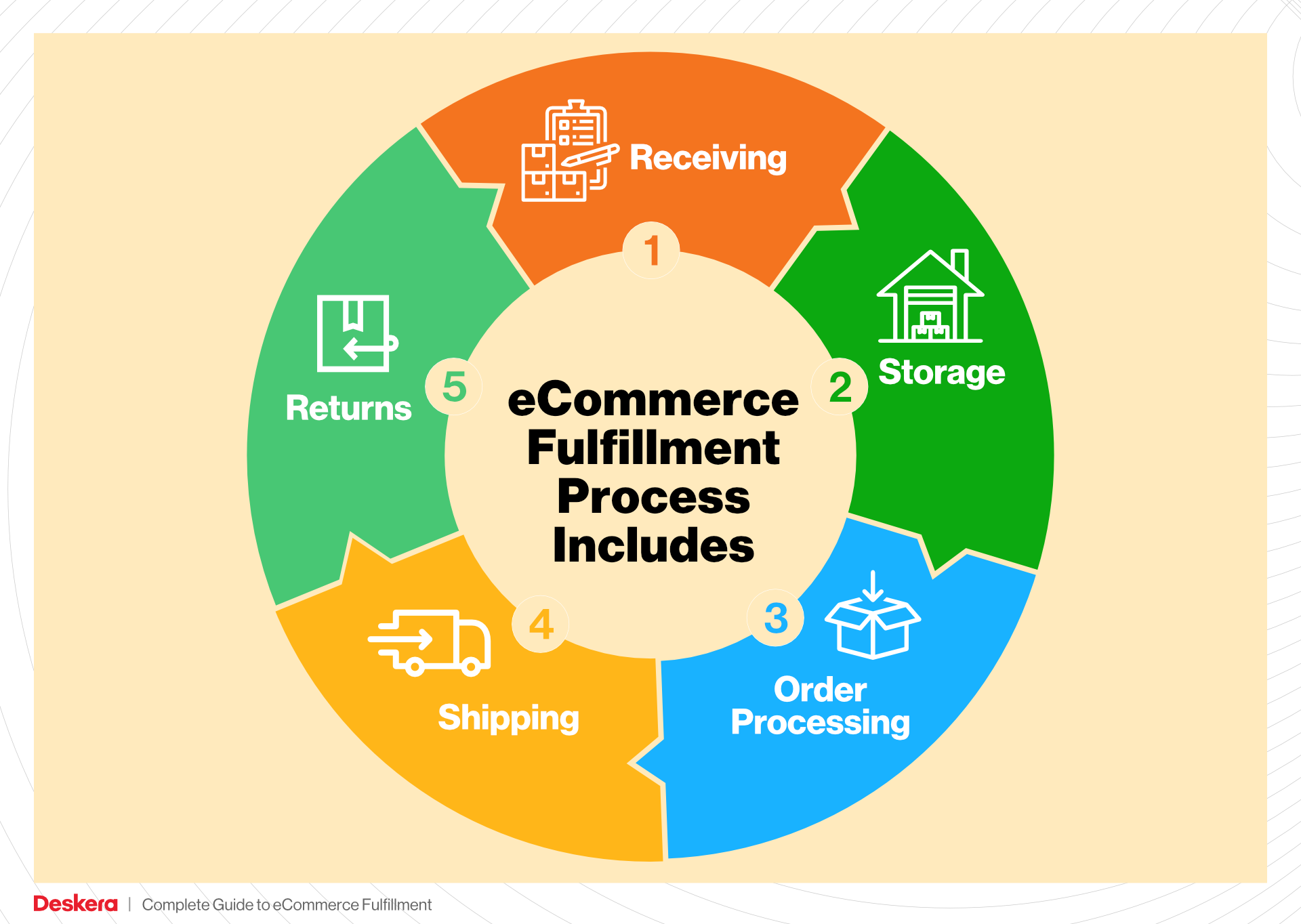
-
Core Fulfillment Services: Dive into the essential services that fulfillment partners typically offer, such as same-day shipping, inventory management, and customer experience enhancements like branded packing slips.
-
Choosing the Right Partner: Get insights into what to look for in a fulfillment partner, including technology capabilities, scalability, and customer service.
-
Pricing Models: Understand the various pricing structures you may encounter, helping you to budget effectively and choose a partner that aligns with your financial goals.
Empowering Your Business Decisions
The ultimate goal of this guide is to empower you with the knowledge needed to make informed decisions about your logistics. By understanding the intricacies of e-commerce fulfillment, you can alleviate the burdens of packing and shipping, improve your operational efficiency, and enhance your customer experience. This, in turn, will allow you to focus on what you do best—growing your business. Let’s dive in and explore the world of e-commerce fulfillment together.
What You’ll Learn In This Guide
- What is E-commerce Fulfillment? An Introduction for Growing Businesses
- The Order Fulfillment Process: From ‘Buy’ Button to Customer’s Door
- Comparing Fulfillment Models: In-House vs. 3PL vs. Dropshipping
- A Deep Dive into Amazon FBA: Pros, Cons, and Who It’s For
- Core Services Offered by Fulfillment Centers
- How to Choose a Fulfillment Partner: A 6-Point Checklist
- Understanding Fulfillment Pricing: A Breakdown of Common Fees
- Frequently Asked Questions (FAQs) about Fulfillment
- Conclusion: Is Outsourcing Fulfillment the Right Move for Your Business?
- Important Disclaimer
The Order Fulfillment Process: From ‘Buy’ Button to Customer’s Door
1. Receiving Inventory
The order fulfillment process begins with receiving inventory into the warehouse. This step involves the acceptance of products from suppliers and vendors, where items are checked against purchase orders to ensure accuracy. Key activities include inspecting the condition of the goods, verifying quantities, and documenting any discrepancies.
This step is crucial because accurate inventory receipt lays the foundation for the entire fulfillment process. If errors occur here, they can propagate through the system, leading to stockouts or overstock situations that can harm your business’s bottom line. A critical term associated with this step is SKU (Stock Keeping Unit), which is used to uniquely identify each product and streamline tracking and management.
2. Warehouse Storage
Once inventory is received, the next step is warehouse storage. This involves organizing products within the warehouse so that they can be easily accessed when orders are placed. Items are typically stored in designated locations, categorized by product type, size, or demand frequency.
Effective storage is essential for maximizing space and improving operational efficiency. A well-organized warehouse reduces the time spent locating items and minimizes the risk of errors during the picking process. The key term here is ABC analysis, a method used to prioritize inventory based on its importance, with ‘A’ items being the most valuable and ‘C’ items being the least. This strategic categorization helps in optimizing storage space and inventory management.
3. Order Picking
The third step in the fulfillment process is order picking, where warehouse staff retrieve the items from storage based on customer orders. This step typically utilizes pick lists, which are generated from order management systems and detail the items and quantities needed for each order.
Efficient picking is vital, as it directly impacts order accuracy and delivery speed. Different picking methods, such as batch picking or wave picking, can be employed depending on the volume of orders and warehouse layout. The effectiveness of this step can significantly influence customer satisfaction, as mistakes or delays in picking can lead to incorrect orders and frustrated customers.
4. Order Packing
Following picking, the next step is order packing. This involves securely packaging the picked items for shipment to ensure they arrive at the customer’s location in perfect condition. During this process, the order is double-checked for accuracy, and appropriate packaging materials are selected based on the nature of the products.

Packing is a critical step because it not only protects products during transit but also enhances the overall customer experience. A well-packed order can reduce returns and increase customer satisfaction. A key term related to this step is branded packing slip, which serves not only as an invoice but also reinforces your brand identity and improves the customer experience by providing essential information about the order.
5. Shipping & Delivery
The final step in the fulfillment process is shipping and delivery. Once orders are packed, they are labeled and handed over to shipping carriers for delivery to customers. This step involves selecting the most efficient shipping method, which can vary based on factors such as cost, speed, and customer preferences.
Timely shipping is critical, as it directly affects customer satisfaction and retention. As noted earlier, if a distributor fails to ship same-day, businesses can lose over 10% of sales. Thus, having a reliable shipping partner and technology to track shipments in real-time is essential. The key term associated with this step is last-mile delivery, which refers to the final leg of the delivery journey from a distribution center to the customer’s doorstep.
Conclusion
Each step in the order fulfillment process is interconnected and plays a vital role in ensuring that customers receive their orders quickly and accurately. By understanding and optimizing each phase—from receiving inventory to shipping and delivery—e-commerce businesses can significantly enhance their operational efficiency and customer satisfaction, ultimately driving growth and success in a competitive marketplace.
Comparing Fulfillment Models: In-House vs. 3PL vs. Dropshipping
Fulfillment Model Comparison Table
| Model | Who Handles Inventory | Best For (Business Stage) | Key Advantage | Key Disadvantage |
|---|---|---|---|---|
| In-House Fulfillment | The business itself | Established businesses | Complete control over inventory and operations | High overhead costs and resource allocation challenges |
| Third-Party Logistics (3PL) | External logistics provider | Growing businesses | Scalability and access to advanced logistics solutions | Less control over the fulfillment process |
| Dropshipping | Supplier/manufacturer | Startups and small businesses | Low upfront investment and minimal risk | Lower margins and dependency on supplier reliability |
In-House Fulfillment
In-house fulfillment involves managing the entire logistics process within the business itself. This model is most suitable for established businesses that have the resources and infrastructure to handle inventory, storage, order processing, and shipping. One of the primary advantages of in-house fulfillment is the complete control it offers over inventory management and customer service. Businesses can ensure that their products are stored and handled according to their standards, leading to a consistent customer experience. Moreover, having direct oversight allows for faster decision-making and adaptability to changing market demands. However, this model comes with significant challenges, including high overhead costs related to warehousing, staffing, and technology investments. As a business scales, it may find it increasingly difficult to allocate resources effectively, which can hinder growth if not managed properly.
Third-Party Logistics (3PL)
Third-party logistics (3PL) providers offer a comprehensive solution for businesses looking to outsource their fulfillment needs. This model is particularly beneficial for growing businesses that want to scale quickly without the burden of managing logistics in-house. 3PLs handle everything from warehousing to inventory management, order processing, and shipping, allowing businesses to focus on their core competencies, such as product development and marketing. A significant advantage of using 3PL services is scalability; businesses can easily adjust their logistics needs based on sales fluctuations without incurring substantial fixed costs. Additionally, many 3PL providers offer advanced technology solutions that can enhance supply chain visibility and efficiency. However, one key disadvantage is the potential loss of control over the fulfillment process. Businesses may face challenges in maintaining brand consistency and ensuring customer satisfaction, as the quality of service is heavily dependent on the 3PL’s capabilities and reliability.
Dropshipping
Dropshipping is a fulfillment model where the retailer does not keep products in stock. Instead, when a retailer sells a product, they purchase the item from a third-party supplier who then ships it directly to the customer. This model is especially attractive for startups and small businesses due to its low upfront investment and minimal risk. Retailers are not required to hold inventory, which reduces overhead costs significantly. This can allow for a broader product offering without the financial burden of stocking items. However, dropshipping also presents challenges, including lower profit margins and reliance on supplier reliability. Since the retailer does not handle the products directly, any issues with shipping or product quality can negatively impact the customer experience. Additionally, the competition in dropshipping can be fierce, as many retailers may be offering similar products from the same suppliers, making it difficult to differentiate one’s brand in a crowded market.
Conclusion
When considering the best fulfillment model for your e-commerce business, it’s crucial to evaluate your current stage, resources, and growth objectives. In-house fulfillment may provide the control and consistency needed for established brands, while 3PL partnerships can offer the flexibility and scalability necessary for businesses looking to expand. Dropshipping can be an excellent entry point for startups, but it requires careful management of supplier relationships to ensure a positive customer experience. Each model has its unique advantages and disadvantages, and the right choice will depend on your business’s specific needs and long-term strategy.
A Deep Dive into Amazon FBA: Pros, Cons, and Who It’s For
Understanding Fulfillment by Amazon (FBA)
Fulfillment by Amazon (FBA) is a service provided by Amazon that allows e-commerce sellers to store their products in Amazon’s fulfillment centers. Amazon then takes care of storage, packaging, and shipping of the products directly to customers. This service not only simplifies logistics for sellers but also leverages Amazon’s extensive distribution network and customer service capabilities.
When a customer orders a product listed as FBA, Amazon picks, packs, and ships the product on behalf of the seller. Additionally, FBA sellers benefit from Amazon’s customer service and returns management, which can significantly enhance the overall customer experience. This service is particularly appealing for businesses looking to scale their operations without the complexities of managing their own fulfillment processes.
How FBA Works
-
Setting Up Your FBA Account: To get started with FBA, sellers need to create an Amazon seller account and enroll in the FBA program. This involves providing business information and linking a bank account for payment.
-
Product Listing: Sellers create product listings in their seller accounts, specifying which items they want to fulfill through FBA. Each product must comply with Amazon’s guidelines.
-
Shipping Inventory: After setting up listings, sellers send their inventory to Amazon’s fulfillment centers. Amazon provides shipping labels and guidelines to ensure that products are packaged correctly.
-
Storage and Fulfillment: Once the products arrive at the fulfillment center, Amazon stores them until a customer places an order. When an order is received, Amazon handles the entire fulfillment process, including picking, packing, and shipping.

-
Customer Service and Returns: Amazon manages all customer service inquiries related to FBA orders, as well as returns. This allows sellers to focus on other aspects of their business, such as marketing and product development.
Pros of Using FBA
-
Prime Eligibility: Products fulfilled through FBA are automatically eligible for Amazon Prime, which can significantly increase visibility and sales. Prime members often prefer products that can be shipped quickly and free, which enhances the attractiveness of FBA listings.
-
Customer Trust: Leveraging Amazon’s brand reputation can instill confidence in customers. Buyers are more likely to purchase from a seller using FBA due to the assurance of reliable shipping and hassle-free returns.
-
Multi-Channel Fulfillment: FBA is not limited to just Amazon.com. Sellers can use FBA for orders from their own websites and other platforms. This flexibility allows businesses to streamline their logistics and maintain a single inventory source.
-
Scalability: FBA allows businesses to scale quickly without the need for a significant investment in warehousing and fulfillment infrastructure. As sales grow, Amazon can handle increased order volume seamlessly.
-
Time-Saving: By outsourcing fulfillment to Amazon, sellers can focus on growing their business instead of managing shipping, handling, and customer service.
Cons of Using FBA
-
High Fees: FBA comes with various fees, including storage fees, fulfillment fees, and additional costs for long-term storage. These fees can quickly add up, especially for sellers with lower-margin products, impacting overall profitability.
-
Strict Inventory Rules: Amazon has stringent guidelines regarding inventory management, including restrictions on certain types of products and limits on inventory levels. Sellers must adhere to these rules to avoid penalties or account suspension.
-
Commingling Risks: With FBA, sellers’ inventory may be commingled with that of other sellers. This means that when an order is fulfilled, it may not be the seller’s own product being shipped. This can lead to issues such as receiving negative reviews for damaged or defective products that were not even sold by the seller.
-
Loss of Control: By using FBA, sellers relinquish control over the fulfillment process. This can be challenging for businesses that prefer to manage their own shipping and customer service to maintain their brand experience.
-
Complex Returns: While Amazon handles returns, the process can sometimes be less favorable for sellers, especially if customers abuse return policies. This can lead to inventory losses and increased costs.
Who is FBA Best For?
Fulfillment by Amazon is particularly well-suited for:
-
Small to Medium-Sized Businesses: Companies looking to scale without the overhead of managing their own fulfillment can benefit from FBA’s efficiency and speed.
-
E-commerce Entrepreneurs: New sellers entering the market can leverage Amazon’s established infrastructure to gain visibility and credibility without needing extensive logistics experience.
-
Retailers with High Demand: Businesses experiencing high sales volume can take advantage of FBA’s rapid fulfillment capabilities to meet customer expectations for quick delivery.
-
Sellers with Diverse Product Lines: Companies with a wide range of products may find it easier to manage inventory and distribution through FBA rather than handling fulfillment in-house.
-
Brands Seeking Brand Trust: Sellers wanting to enhance their brand image and customer trust can benefit from the reliability and reputation associated with Amazon’s fulfillment services.
In conclusion, while FBA presents significant advantages for scaling e-commerce businesses, it is essential for sellers to carefully evaluate the associated costs and potential drawbacks to determine if it aligns with their operational goals. Understanding these factors will enable businesses to make informed decisions on their fulfillment strategies.
Core Services Offered by Fulfillment Centers
Inventory Management & Warehousing
Inventory management and warehousing are foundational services provided by fulfillment centers that directly impact the efficiency of e-commerce operations. This service involves the systematic tracking of inventory levels, orders, sales, and deliveries, all while ensuring that products are stored in an organized manner within the warehouse.
The primary benefit of effective inventory management is the reduction of holding costs while maximizing stock availability. By utilizing advanced inventory tracking systems, fulfillment centers can provide real-time updates on stock levels, enabling businesses to avoid overstocking or stockouts. This capability is particularly crucial for e-commerce businesses that rely on just-in-time inventory practices to meet customer demands without incurring unnecessary costs.
Furthermore, warehousing solutions often include climate control and security measures that safeguard products, ensuring that they remain in optimal condition until they are shipped. For e-commerce businesses, this means enhanced product quality and customer satisfaction, which can lead to increased repeat purchases and brand loyalty.
Pick and Pack Services
Pick and pack services are integral to the fulfillment process and involve the selection of ordered items from inventory and packing them for shipment. This service streamlines the order fulfillment process by combining multiple steps into one cohesive operation.
The benefits of pick and pack services are multifaceted. First, they enhance order accuracy, significantly reducing the likelihood of shipping errors that can lead to customer dissatisfaction and increased return rates. Advanced systems often leverage barcode scanning and other technologies to ensure that the correct items are picked for each order.
Additionally, efficient pick and pack operations can drastically reduce order processing times. In today’s competitive e-commerce landscape, where customers expect fast delivery, being able to ship orders quickly is a significant advantage. Fulfillment centers that offer same-day shipping capabilities, as highlighted by Tigris Fulfillment Partners, can further elevate a business’s customer service profile, leading to higher conversion rates and increased sales.
Kitting and Assembly
Kitting and assembly services involve the pre-assembly of multiple products into a single kit or package, tailored to meet specific customer needs or market demands. This service is particularly valuable for e-commerce businesses that offer bundled products or promotional items.
The primary advantage of kitting is that it simplifies the order process for customers, enhancing their shopping experience. By offering pre-packaged kits, businesses can not only streamline their inventory management but also create unique product offerings that can differentiate them in a crowded market. For instance, a kitchen supply store might offer a “baking essentials kit” that combines several related items, making it easy for customers to purchase everything they need in one go.
Moreover, kitting can lead to increased average order values. When customers perceive added value in bundled items, they are often willing to spend more, thus boosting overall sales. Fulfillment centers that provide kitting services can also help businesses manage seasonal promotions or limited-time offers, which can drive urgent sales and clear out inventory.
Returns Management (Reverse Logistics)
Returns management, or reverse logistics, is a critical service offered by fulfillment centers that deals with the process of handling returned products. This service encompasses everything from the initial return request to processing, restocking, or refurbishing items for resale.
The benefits of an effective returns management system are significant. For e-commerce businesses, a streamlined returns process can enhance customer satisfaction. A hassle-free return policy encourages customers to shop with confidence, knowing they can easily return products if they are not satisfied. This assurance can lead to higher conversion rates and increased customer retention.
Additionally, fulfillment centers that specialize in returns management can help businesses analyze return data to identify patterns and potential issues with products. Understanding the reasons behind returns allows companies to make informed decisions about product quality, descriptions, and inventory management, ultimately leading to reduced return rates and improved profitability.
In conclusion, the core services offered by fulfillment centers, such as inventory management and warehousing, pick and pack services, kitting and assembly, and returns management, are essential for e-commerce businesses aiming to scale efficiently. By leveraging these services, businesses can not only enhance operational efficiency but also improve customer satisfaction and drive growth in a competitive marketplace.
How to Choose a Fulfillment Partner: A 6-Point Checklist
Location & Warehouse Network
Importance:
The geographic location of your fulfillment partner’s warehouses plays a crucial role in shipping efficiency and cost-effectiveness. A partner with strategically located warehouses can ensure faster delivery times and lower shipping costs, which is vital for customer satisfaction and retention.
Questions to Ask:
1. Where are your warehouses located, and how many do you have?
2. How does your warehouse network align with our target customer base?
3. What is your average shipping time to key markets?
4. Do you have the capability to open additional locations if our needs change?
Technology & Integrations
Importance:
In today’s digital landscape, the technology used by your fulfillment partner can significantly impact your operational efficiency. A robust technology stack allows for seamless integration with your e-commerce platform, real-time inventory management, and enhanced order tracking capabilities. This not only streamlines operations but also improves the customer experience.
Questions to Ask:
1. What technology platforms do you use for inventory management and order processing?
2. Are you able to integrate with our existing e-commerce systems (e.g., Shopify, WooCommerce)?
3. How do you handle data security and compliance?
4. Can you provide real-time reporting and analytics on inventory and order status?
Specializations (e.g., Cold Storage, Oversized Items)
Importance:
Depending on your product range, you may require a fulfillment partner that specializes in specific types of storage or handling. For example, if you sell perishable goods, a partner with cold storage facilities is essential. Similarly, if your products are oversized or require special handling, ensure your partner has the necessary capabilities.
Questions to Ask:
1. Do you have specialized facilities for handling specific product types (e.g., cold storage, hazardous materials)?
2. What experience do you have in managing the logistics of oversized or fragile items?
3. How do you ensure compliance with industry-specific regulations (e.g., food safety, hazardous materials)?
4. Can you provide case studies or references from similar businesses you have worked with?
Scalability & Capacity
Importance:
As your business grows, your fulfillment needs will evolve. It’s essential to choose a partner that can scale operations alongside your business. Whether you experience seasonal spikes in demand or long-term growth, your fulfillment partner should be able to accommodate these changes without compromising service quality.
Questions to Ask:
1. What is your current capacity for handling orders, and how do you manage peak seasons?
2. Can you quickly scale up operations if our order volume increases unexpectedly?
3. How do you manage inventory turnover to ensure that we are not overstocked or understocked?
4. What measures do you have in place to handle supply chain disruptions?
Pricing and Contracts
Importance:
Understanding the pricing structure and contract terms is crucial for budgeting and financial planning. Look for transparency in pricing and ensure there are no hidden fees that could impact your margins. A well-defined contract will protect both parties and clarify expectations.
Questions to Ask:
1. Can you provide a detailed breakdown of your pricing structure (e.g., storage fees, shipping costs)?
2. Are there any additional fees we should be aware of (e.g., for returns, special handling)?
3. What is the length of the contract, and what are the terms for cancellation or renegotiation?
4. How do you handle price increases, and how will we be notified?
Customer Support & Reviews
Importance:
Reliable customer support is essential for addressing any issues that arise during the fulfillment process. Additionally, researching reviews and testimonials can provide insight into the partner’s reputation and reliability. A partner that values customer service will help mitigate challenges and enhance your overall experience.
Questions to Ask:
1. What customer support channels do you offer (e.g., phone, email, chat)?
2. What are your typical response times for support inquiries?
3. Can you provide references or testimonials from current clients?
4. How do you handle disputes or service failures?
Conclusion
Choosing the right fulfillment partner is a critical decision that can significantly impact your e-commerce operations. By following this checklist and asking the right questions, you can evaluate potential partners more effectively and select one that aligns with your business goals. Remember, a strong partnership will not only enhance your logistics capabilities but also contribute to your overall success and customer satisfaction.
Understanding Fulfillment Pricing: A Breakdown of Common Fees
Initial Setup Fees
Initial setup fees are typically one-time charges associated with onboarding a new client to a fulfillment service. These fees cover the costs of integrating your e-commerce platform with the fulfillment provider’s systems, setting up inventory management protocols, and configuring any necessary technology, such as electronic data interchange (EDI) systems.
Calculating initial setup fees varies by provider but often includes:
– Software Integration Costs: The technical work required to connect your sales platform with the fulfillment center.
– Inventory Setup: This includes data entry of SKUs, product descriptions, and pricing into the fulfillment system.
– Warehouse Configuration: Setting up your specific inventory layout within the warehouse, which can involve physical labor and time.
It’s important to clarify what is included in these fees and whether ongoing support will be provided without additional charges.
Receiving Fees
Receiving fees are charged when the fulfillment center accepts and processes incoming shipments of your products. This fee typically covers the labor and resources required to unload, inspect, and stock products in the warehouse.
Calculating receiving fees can involve:
– Per-Pallet or Per-Box Fees: Many providers charge based on the number of pallets or boxes received.
– Inspection Costs: If products need to be inspected for quality assurance, additional costs may apply.
– Data Entry Fees: Recording the received items into the inventory system can incur fees, especially for large or complex shipments.
Understanding the specifics of how receiving fees are calculated can help you better plan your inventory management strategy and avoid unexpected costs.
Storage Fees (per pallet/bin)
Storage fees are recurring charges for holding your inventory within the fulfillment center. These fees can be based on the amount of space your products occupy, typically calculated per pallet or per bin.
Key factors in storage fee calculations include:
– Size of the Inventory: The more space your inventory takes up, the higher the storage fees.
– Duration of Storage: Fees may vary depending on how long the products are stored. Some providers offer tiered pricing for long-term storage.
– Type of Products: Certain products may require special handling or temperature control, which can affect storage costs.
To minimize storage fees, consider implementing just-in-time inventory practices or leveraging seasonal sales strategies to reduce the amount of inventory held at any given time.
Pick & Pack Fees (per item/order)
Pick and pack fees are charged for the labor involved in selecting items from the warehouse and packing them for shipment. This fee is critical to understand, as it can significantly impact your overall fulfillment costs.
Calculating pick and pack fees generally involves:
– Per-Item Fees: Many fulfillment centers charge a fee for each item picked and packed, which can vary based on the complexity of the order.
– Order Complexity: If an order requires special packaging or handling (such as fragile items), additional fees may apply.
– Batch Processing: Some providers offer reduced rates for bulk orders or batch processing, where multiple items are picked and packed together.
Efficient inventory management and order processing can help reduce pick and pack fees, so consider optimizing your product assortments and order fulfillment processes.
Shipping Fees
Shipping fees are one of the most variable components of fulfillment pricing, encompassing the costs associated with transporting your products to customers. These fees can fluctuate based on numerous factors, including shipping method, destination, package size, and weight.
Shipping fee calculations typically consider:
– Carrier Rates: Different carriers (e.g., FedEx, UPS, USPS) have varying rates that can change based on service levels (ground, express, etc.).
– Weight and Dimensions: Shipping costs often depend on the weight and size of the packages being shipped.
– Zone Pricing: Shipping fees can vary based on the distance from the fulfillment center to the delivery address, commonly referred to as shipping zones.
To manage shipping costs effectively, it’s advisable to negotiate rates with carriers or utilize fulfillment partners that offer discounted shipping rates due to their volume.
Tips for Getting an Accurate Quote
- Detailed Inventory List: Provide a comprehensive list of your products, including dimensions, weights, and any special handling requirements.
- Volume Projections: Share your expected shipping volumes and seasonal fluctuations to get a more tailored quote.
- Understand Fee Structures: Ask for a breakdown of all potential fees, including hidden costs, to avoid surprises.
- Request Multiple Quotes: Compare offers from different fulfillment partners to find the best fit for your business needs.
- Clarify Terms: Ensure you understand the terms of service and any potential price adjustments in the future.
By taking these steps, you can better navigate the complexities of fulfillment pricing and select a partner that aligns with your business goals.
Frequently Asked Questions (FAQs) about Fulfillment
1. What is Tigris Fulfillment Partners?
Tigris Fulfillment Partners is a master distributor based in Atlanta, specializing in logistics and fulfillment services for e-commerce, retail, and wholesale businesses. They offer a robust network of over 30 fulfillment centers across the U.S., enabling fast, reliable delivery and same-day shipping capabilities.
2. What are the key services offered by Tigris Fulfillment Partners?
Tigris offers a comprehensive range of services, including:
– Same-day Shipping: Ensures prompt delivery to meet customer expectations.
– Inventory Management: Helps monitor SKU vitality and manage assortment effectively.
– E-commerce Support: Provides tailored solutions for e-commerce businesses, including branded packing slips and robust marketing support.
– Logistics Coordination: Streamlines the logistics process for both retail and wholesale partners.
3. How does Tigris ensure same-day shipping?
Tigris Fulfillment Partners has developed efficient fulfillment processes and utilizes advanced technology to ensure that orders are processed and shipped on the same day they are received. This capability is critical in minimizing sales loss, as studies show that failing to ship same-day can result in a 10% decline in sales.
4. What is the difference between a warehouse and a fulfillment center?
A warehouse is primarily a storage facility where goods are kept until they are needed. In contrast, a fulfillment center is a specialized type of warehouse that focuses on processing, packing, and shipping orders directly to customers. Fulfillment centers also often provide additional services such as inventory management and returns processing.
5. What is a 3PL (Third-Party Logistics)?
A 3PL is a service provider that manages logistics and supply chain operations on behalf of a business. This can include warehousing, transportation, distribution, and order fulfillment. Partnering with a 3PL like Tigris allows businesses to focus on core activities while leveraging the expertise and infrastructure of the 3PL for efficient logistics management.
6. How much do fulfillment services cost?
The cost of fulfillment services can vary widely based on factors such as order volume, storage needs, and the specific services required (e.g., packing, shipping, returns). Tigris Fulfillment Partners typically offers customized pricing based on the unique needs of each business, ensuring scalability and cost-effectiveness as sales grow.
7. How can Tigris help my e-commerce business grow?
Tigris supports e-commerce growth through:
– Fast and Reliable Shipping: Meeting customer expectations for speed.
– Data-Driven Insights: Utilizing analytics to refine inventory and marketing strategies.
– Flexible Technology Solutions: Adapting to changing business needs and enhancing operational efficiency.
8. What types of products does Tigris specialize in?
Tigris specializes in a wide range of products, particularly in the kitchen, bath, plumbing, and HVAC categories. Their extensive network allows them to offer a diverse assortment tailored to market demands.
9. How does Tigris handle returns?
Tigris provides a streamlined returns process, which includes managing reverse logistics to ensure that returned products are processed efficiently. This helps minimize the impact on inventory and enhances the overall customer experience.
10. What should I consider when choosing a fulfillment partner?
When selecting a fulfillment partner like Tigris, consider the following factors:
– Shipping Speed: Ensure they can meet your delivery timelines.
– Technology Integration: Look for partners that offer seamless integration with your e-commerce platform.
– Scalability: Choose a partner that can grow with your business and adapt to changing needs.
– Customer Support: Evaluate their commitment to customer service and responsiveness to your business requirements.
Conclusion: Is Outsourcing Fulfillment the Right Move for Your Business?
Key Benefits of Outsourcing Fulfillment
Outsourcing your fulfillment process can unlock significant advantages for your e-commerce business. Primarily, it allows you to save precious time—time that can be redirected towards strategic initiatives such as marketing, product development, and customer engagement. By partnering with a fulfillment service like Tigris Fulfillment Partners, you can ensure efficient order processing, which is crucial in today’s fast-paced market where customer expectations for speed and accuracy are higher than ever.
Moreover, scalability is a vital benefit. As your business grows, so do your logistics demands. A capable fulfillment partner can adapt to increased order volumes without compromising service quality. This flexibility is essential for e-commerce businesses that experience seasonal fluctuations or unexpected spikes in demand.
Additionally, leveraging the expertise of a dedicated fulfillment partner means you have access to advanced technologies and industry best practices. From inventory management to data-driven insights, a knowledgeable partner can help streamline operations, optimize supply chain management, and enhance the overall customer experience.
Choosing the Right Partner
However, not all fulfillment partners are created equal. It’s crucial to select a provider that aligns with your specific business needs and growth objectives. Look for a partner that prioritizes operational excellence, flexibility, and a customer-centric approach—qualities that can significantly impact your business’s bottom line.
Call to Action
Now is the time to evaluate your current shipping and fulfillment processes. Conduct an audit to identify inefficiencies and explore whether partnering with a fulfillment service could propel your business forward. Consider reaching out to potential partners, like Tigris Fulfillment Partners, to discuss how they can support your growth strategy. Making the right choice could be the key to scaling your operations and enhancing customer satisfaction.
Important Disclaimer
⚠️ Important Disclaimer
The information in this guide is for educational purposes. Fulfillment services, pricing, and platform features change frequently. Always conduct your own due diligence and consult with providers directly before making business decisions.
